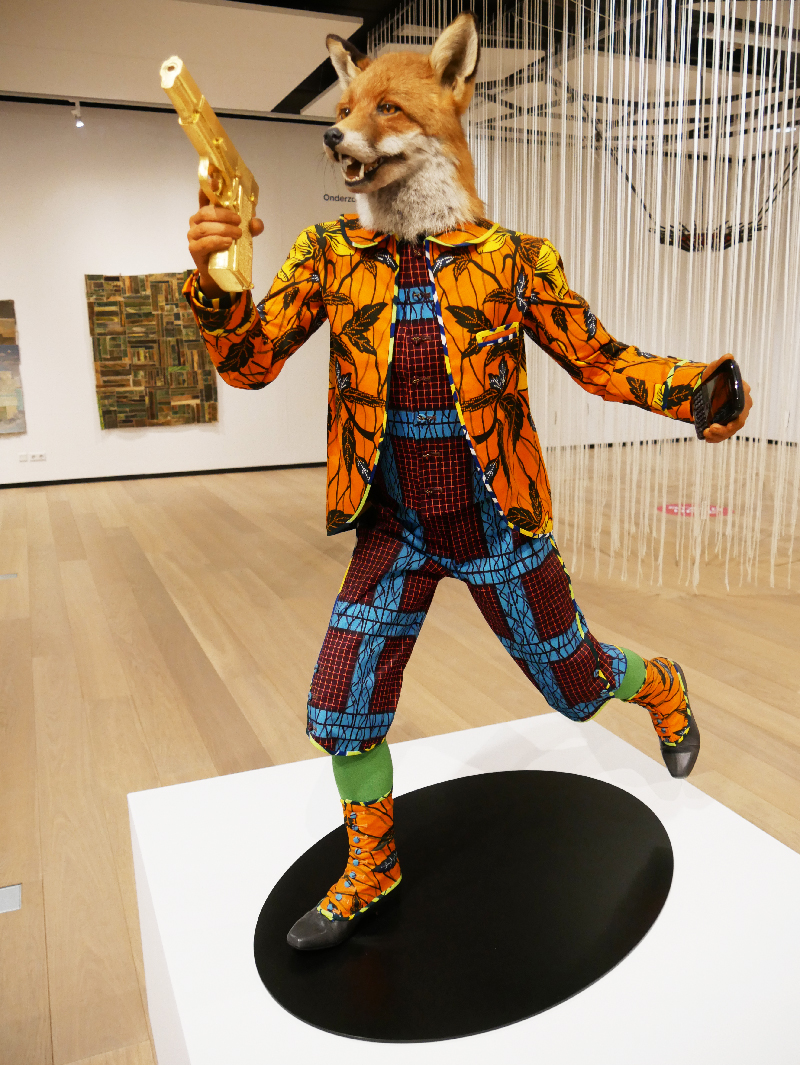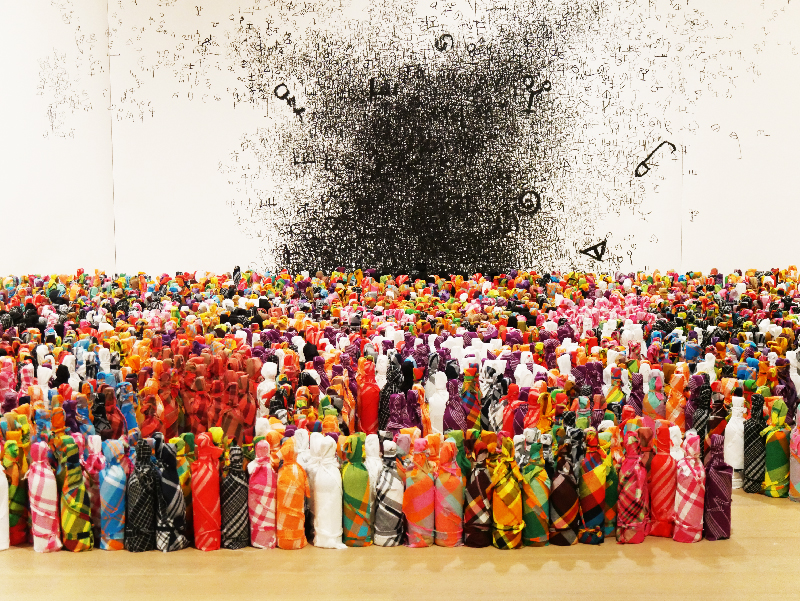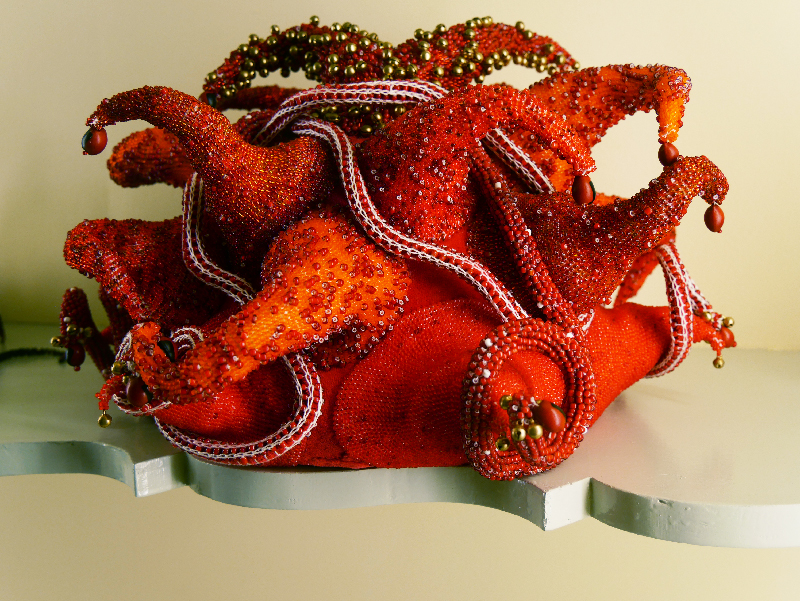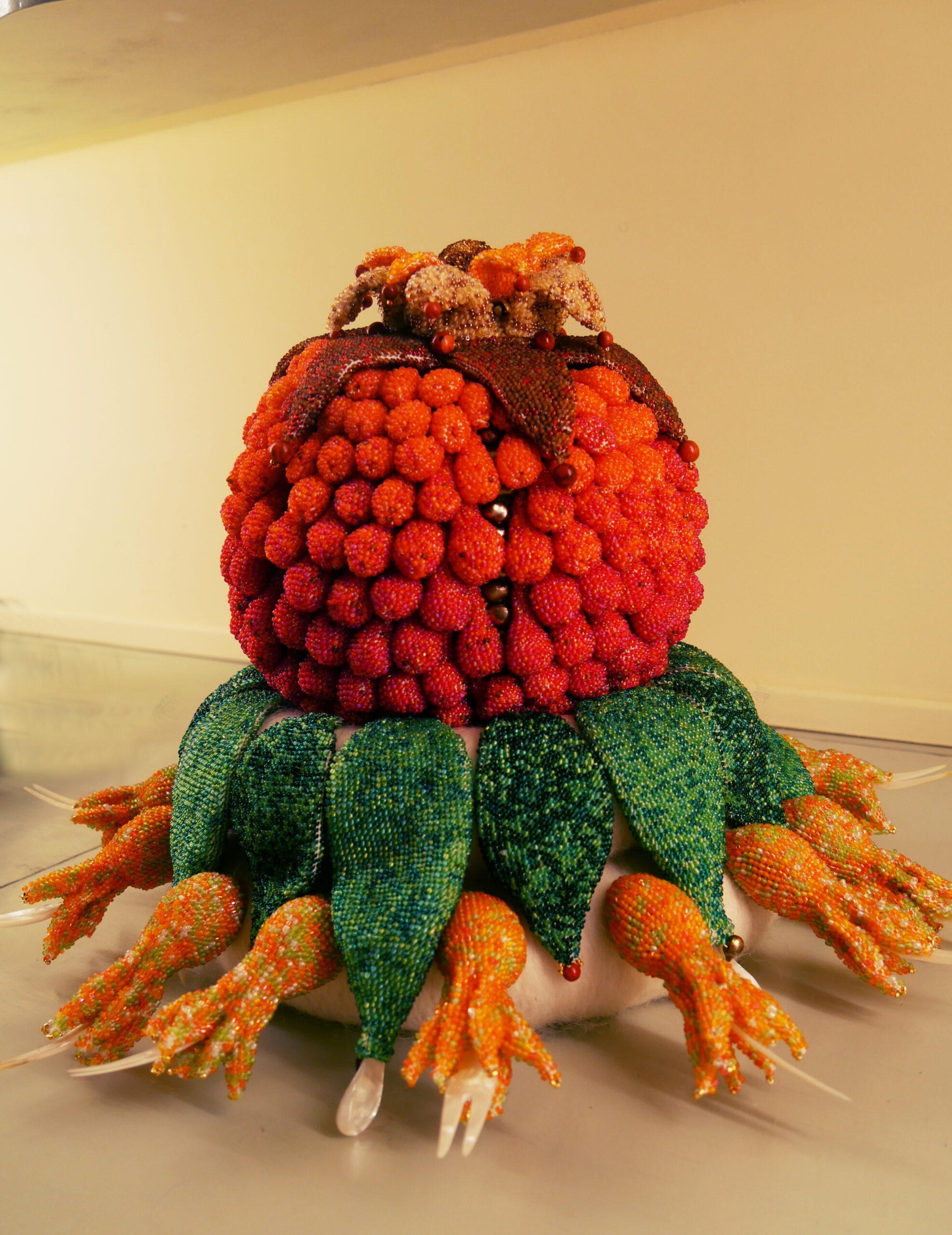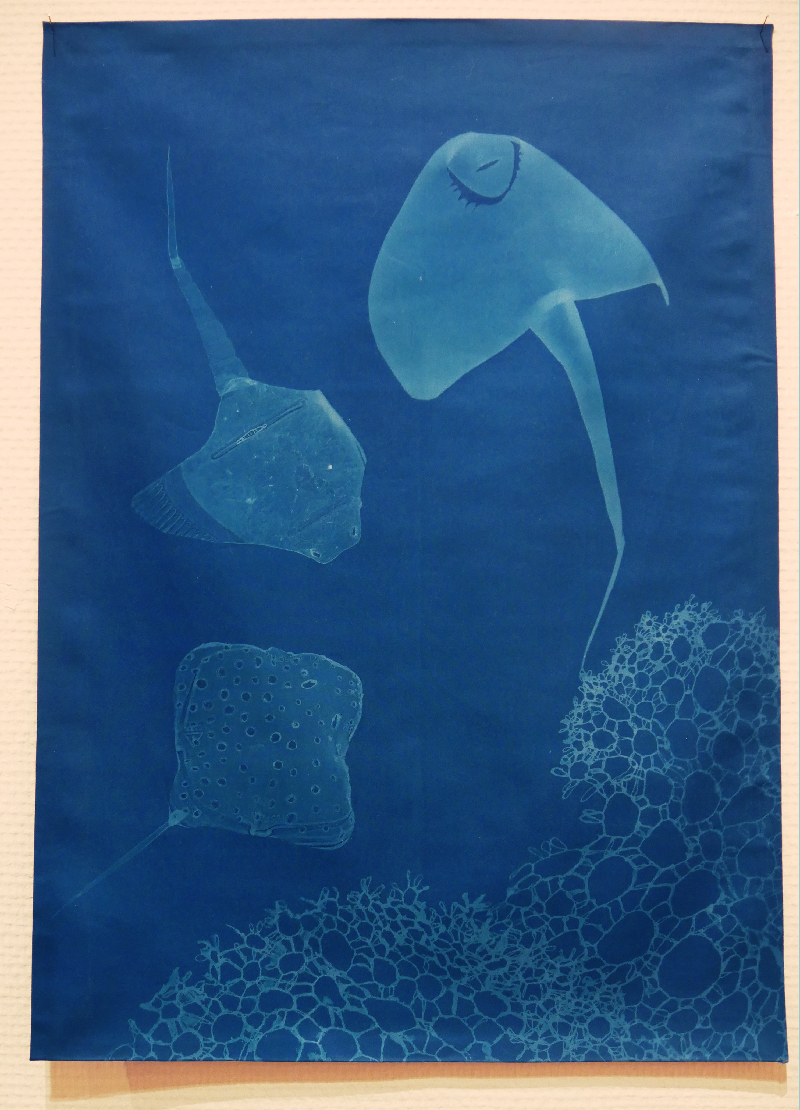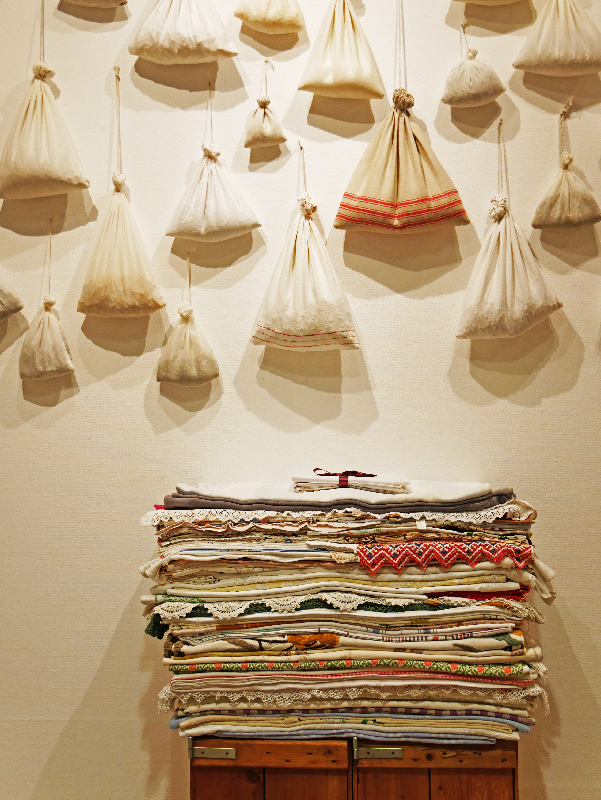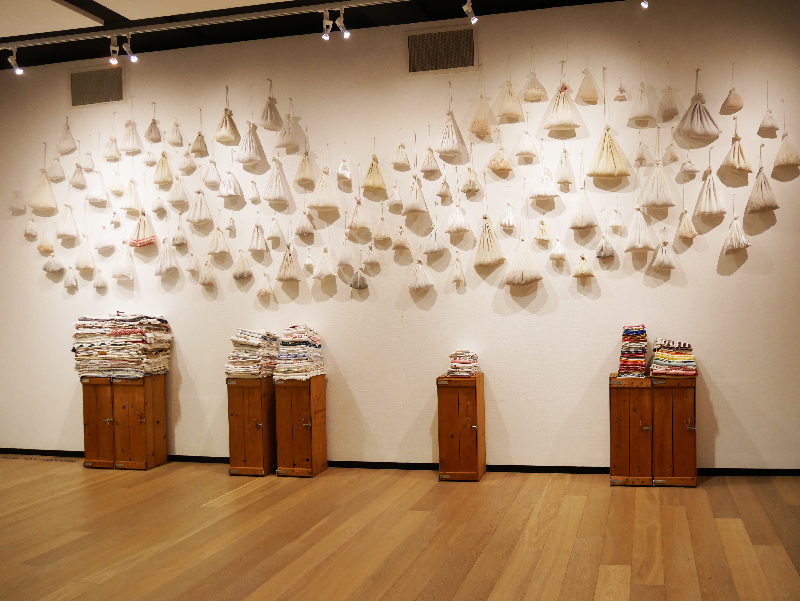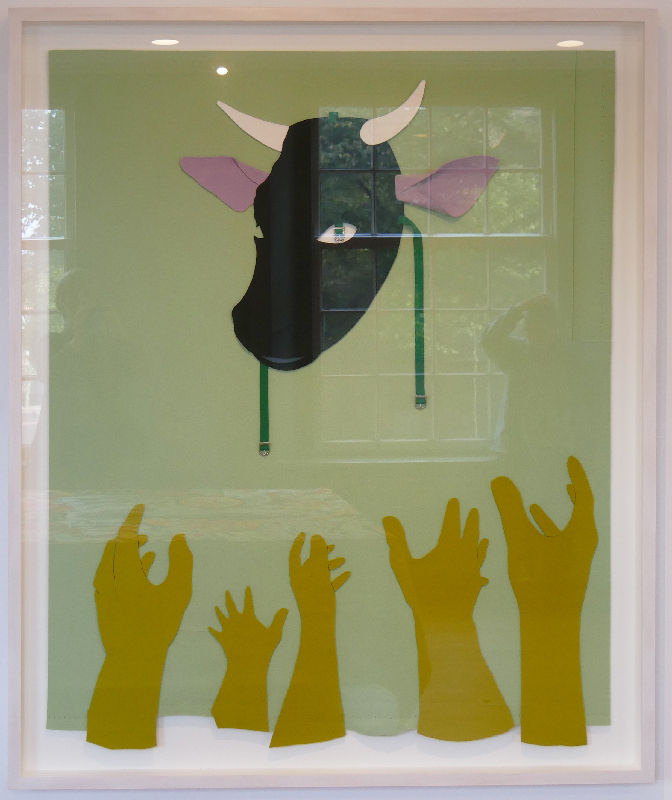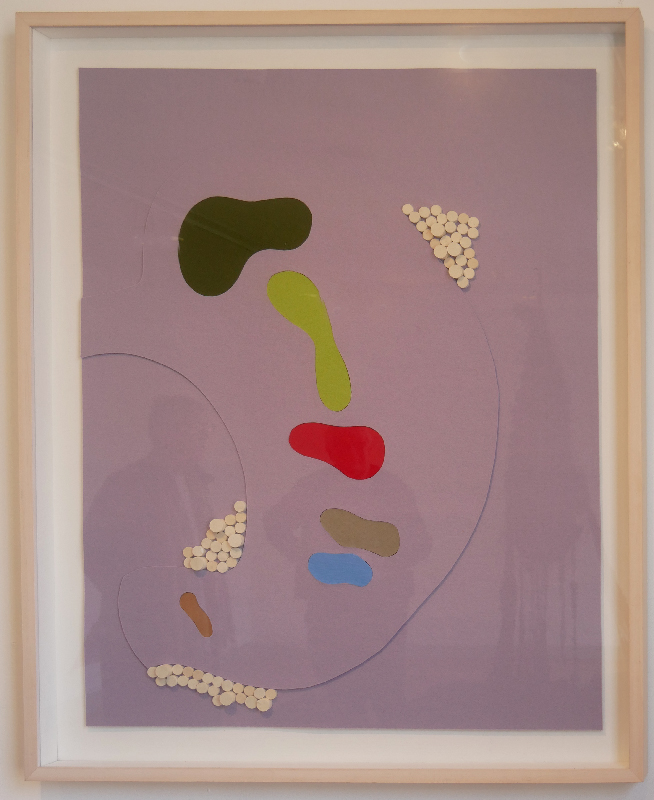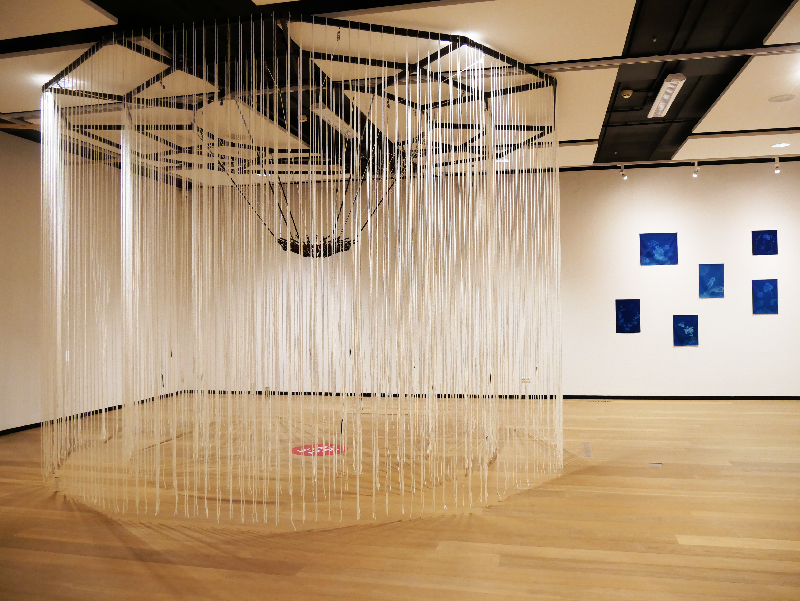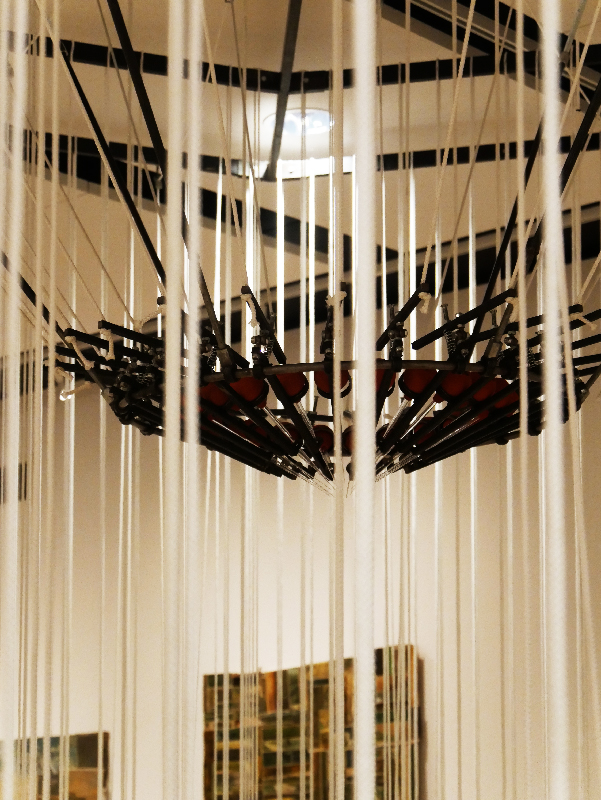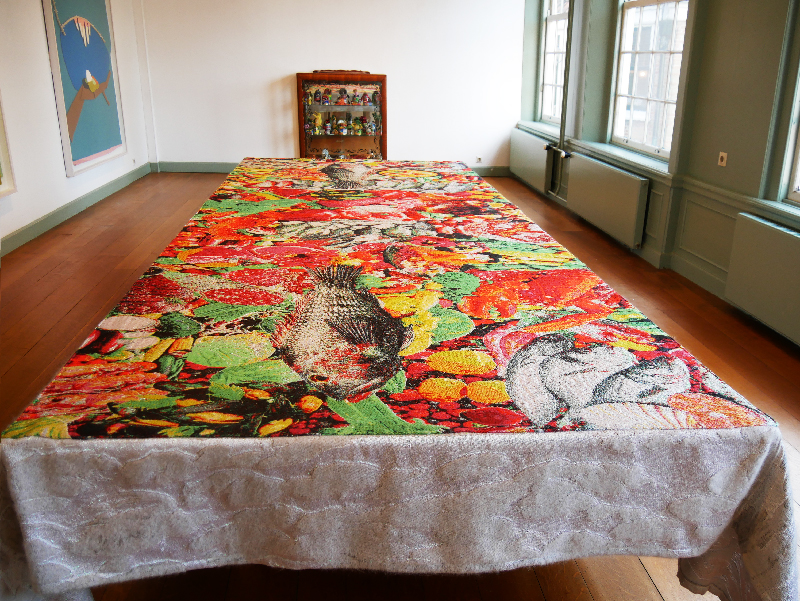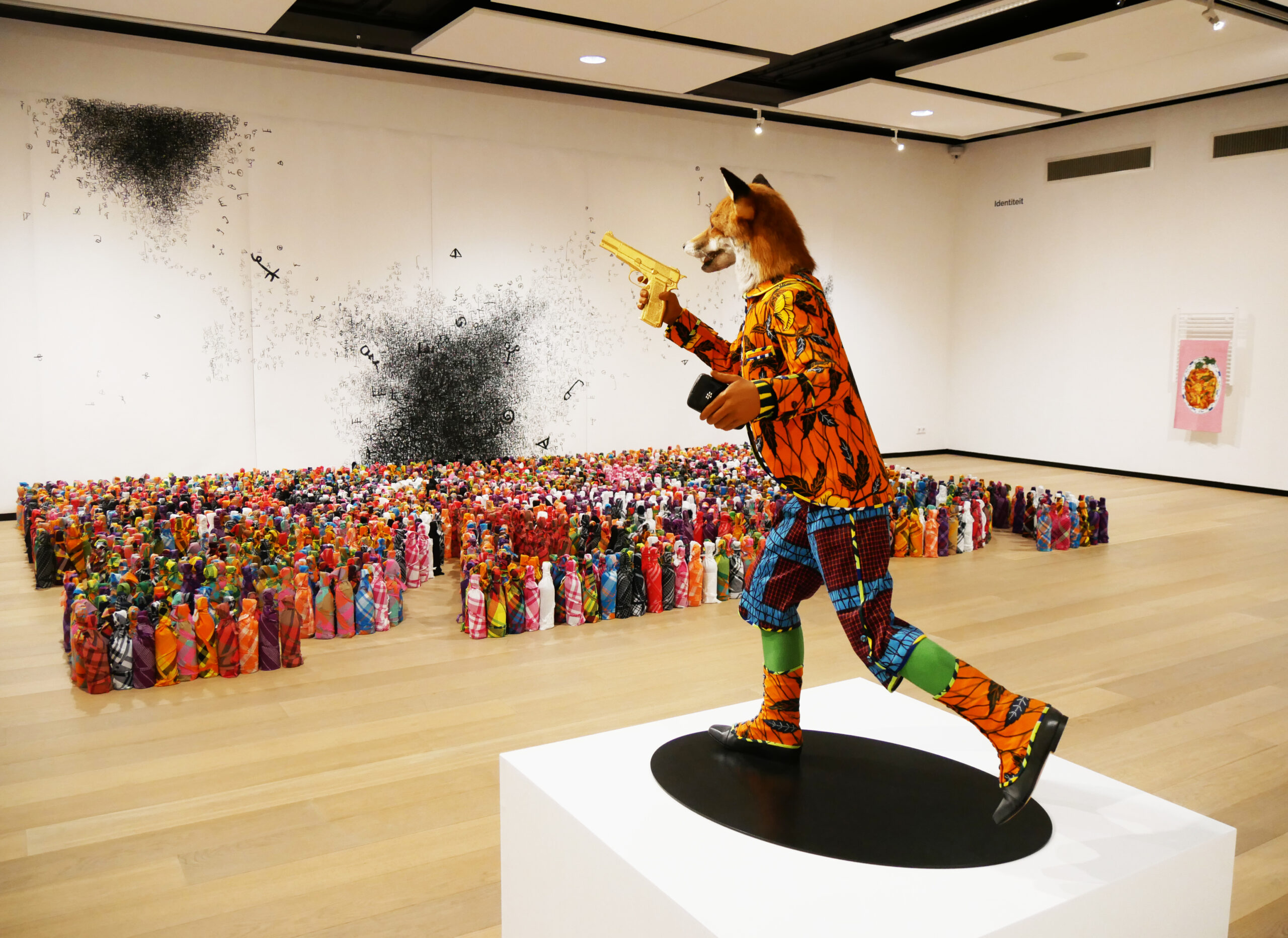
The 7th Textile Biennial is being held in Rijswijk near The Hague from 29th August 2021 to 16th January 2022. This year everything is new: a new director, Arnaud van Aalst, and a new curator, Diana Wind. The interior of the museum has also changed; the coffee room near the beautiful garden has now given way to an ordinary office and meeting room. The change in personnel will have rather negative effects for the public interested in textile art. The new management wanted to do everything differently from the previous six textile biennials which were shaped by curator Anne Kloosterboer. On page 7 of the catalogue, Diana Wind writes: “Previous editions focused on the craftmanship and techniques used to create outstanding works of art made with textile. We are living in a time of upheaval and this motivated us to select art of relevance to today´s world and to invite artists whose engagement touches on food.”
I wrote about a previous edition of this biennial in my blog posted on 23rd July 2017: “… they are looking for new artists, new approaches to textiles and exceptional concepts. Jurors for this Biennial are looking at textiles from a fine art angle, but they are very happy when the entries include well-crafted works. This Biennial helps bridge the gap that unfortunately still exists between craft and fine art.”
The 2021 Biennial had an open call, but no jury was mentioned in the catalogue. The director writes on page 5 of the catalogue that the twenty participating artists were found “via our open call and through our network”. Fourteen of these twenty artists are either Dutch or resident in the Netherlands. This is no longer a serious international biennial, less so because some of the foreigners have well-known names that probably secured funding. Or could anyone seriously believe that Yinka Shonibare put in an application? The catalogue also fails to mention which of the artists were invited.
When looking at the work, there were only a few new things to discover; the aforementioned Yinka Shonibare submitted a very nice piece, but it can hardly be considered “new”. The works by Regula Maria Müller from Switzerland, but resident in the Netherlands, and Marcel Pinas from Suriname who also lives in the Netherlands were new and interesting to me. In second place I liked the work by Maria Ikonomopoulou from Greece, again resident in the Netherlands, Thomas Grünfeld from Germany and Heather Beardsley from the USA. In other pieces, the words “participatory” and “social engagement” were often encountered. I missed the poetry and light-footedness of the works seen in Anna Kloosterboer’s editions! Some works just annoyed me a little, for example the piece by Marije Vogelzang, a pioneer in the field of food & design, a work that seemed to be not functioning; or the tablecloth for a feast by Peter Hellemons, jacquard-woven by the Textile Museum Tilburg, a very beautiful fabric but clearly unsuitable for a tablecloth. The jacquard fabric was thick and stiff, and the thinner edges along the sides had been stitched on awkwardly to fit just this one table. Furthermore, I was unable to appreciate the artistic sense of the work by Arne Hendriks, who calls himself “an undisciplined artistic researcher”. I got that it had to do with algae as a source of plant-based protein, but I did not get what it had to do with a textile biennial. The list of irritations goes on!
I went to the exhibition with friends who were art-oriented, although not particularly at home with textiles. To my great pleasure their vote for the Audience Award went to Regula Maria Müller because her work sparked the imagination.
That was positive, but unfortunately I can no longer advise textile artists to apply for the event unless they live in the Netherlands. Good-bye International Textile Biennial of Rijswijk …
A catalog has been published for the exhibition: Waanders/ Museum Rijswijk, 2021, 96 pages, 60 color photos, price EUR 17.50
